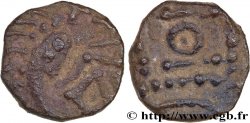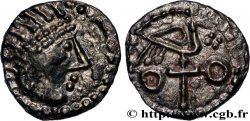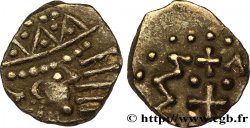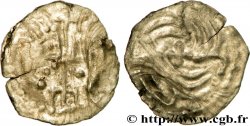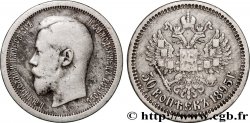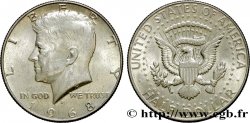v45_1006 - ENGLAND - ANGLO-SAXONS Sceat aux têtes affrontées et aux 4 oiseaux, Série J, type 37
MONNAIES 45 (2010)
Starting price : 300.00 €
Estimate : 500.00 €
Realised price : 330.00 €
Number of bids : 2
Maximum bid : 420.00 €
Starting price : 300.00 €
Estimate : 500.00 €
Realised price : 330.00 €
Number of bids : 2
Maximum bid : 420.00 €
Type : Sceat aux têtes affrontées et aux 4 oiseaux, Série J, type 37
Date: c. 710-760
Mint name / Town : Sud-est de l’Angleterre
Metal : silver
Diameter : 12,5 mm
Weight : 0,79 g.
Rarity : R1
Coments on the condition:
Monnaie sur un flan large avec les types complets et centré. Le droit est de frappe un peu molle, mais le revers est particulièrement vigoureux. Patine grise et brillante de collection ancienne
Catalogue references :
Obverse
Obverse legend : ANÉPIGRAPHE.
Obverse description : Deux têtes face à face, une croix posée sur une base entre les deux ; grènetis.
Reverse
Reverse legend : ANÉPIGRAPHE.
Reverse description : Petite croix bouletée entourée de quatre oiseaux (?) formant une sorte de swastika sinistrogyre ; grènetis.
Commentary
Cette monnaie est l’une des rares avec deux représentations humaines de l’époque mérovingienne. Ce type est communément trouvé en Gaule, isolé ou avec d’autres deniers mérovingiens, ce qui prouve une circulation large. D. M. Metcalf distingue deux groupes dans ces monnaies ; les monnaies officielles et les imitations. Les exemplaires de plus beau style sont traditionnellement considérés comme officiels et les autres comme imitations...
Ce type aurait été frappé dans toutes les régions du Sud et de l’Est de l’Angleterre, mais plus spécialement au sud-est et dans le bassin de la Tamise.
This coin is one of the few with two human representations from the Merovingian period. This type is commonly found in Gaul, either alone or with other Merovingian denarii, which proves a wide circulation. DM Metcalf distinguishes two groups in these coins: official coins and imitations. The finest examples are traditionally considered official and the others as imitations... This type would have been struck in all regions of the South and East of England, but especially in the South-East and in the Thames basin
Ce type aurait été frappé dans toutes les régions du Sud et de l’Est de l’Angleterre, mais plus spécialement au sud-est et dans le bassin de la Tamise.
This coin is one of the few with two human representations from the Merovingian period. This type is commonly found in Gaul, either alone or with other Merovingian denarii, which proves a wide circulation. DM Metcalf distinguishes two groups in these coins: official coins and imitations. The finest examples are traditionally considered official and the others as imitations... This type would have been struck in all regions of the South and East of England, but especially in the South-East and in the Thames basin







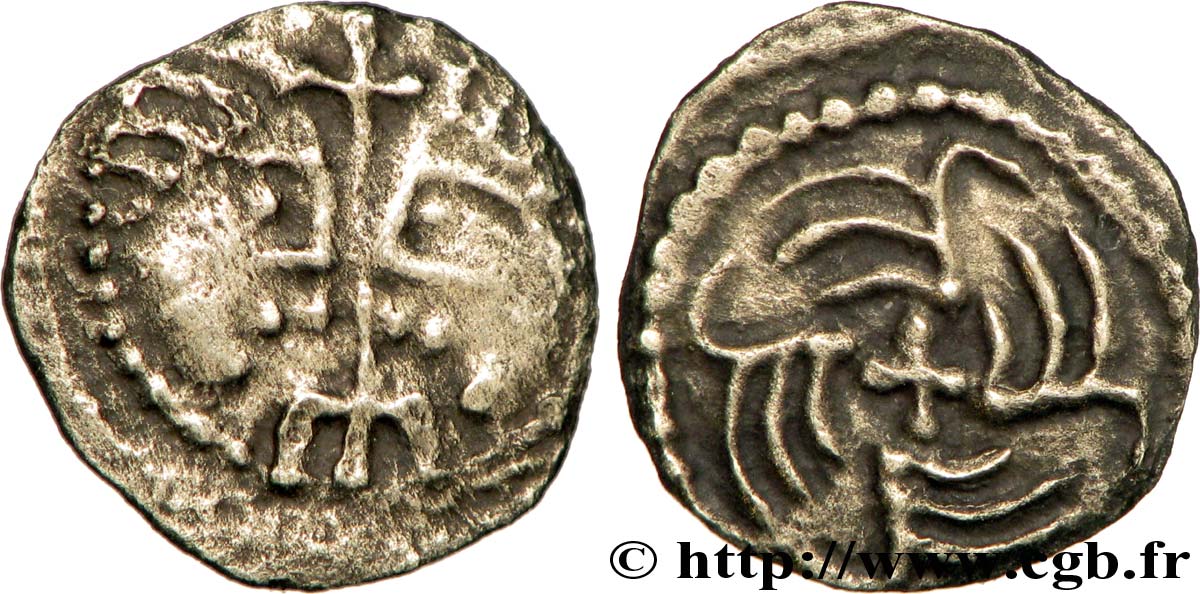
 Report a mistake
Report a mistake Print the page
Print the page Share my selection
Share my selection Ask a question
Ask a question Consign / sell
Consign / sell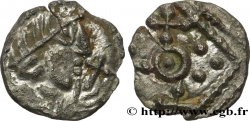
 Full data
Full data